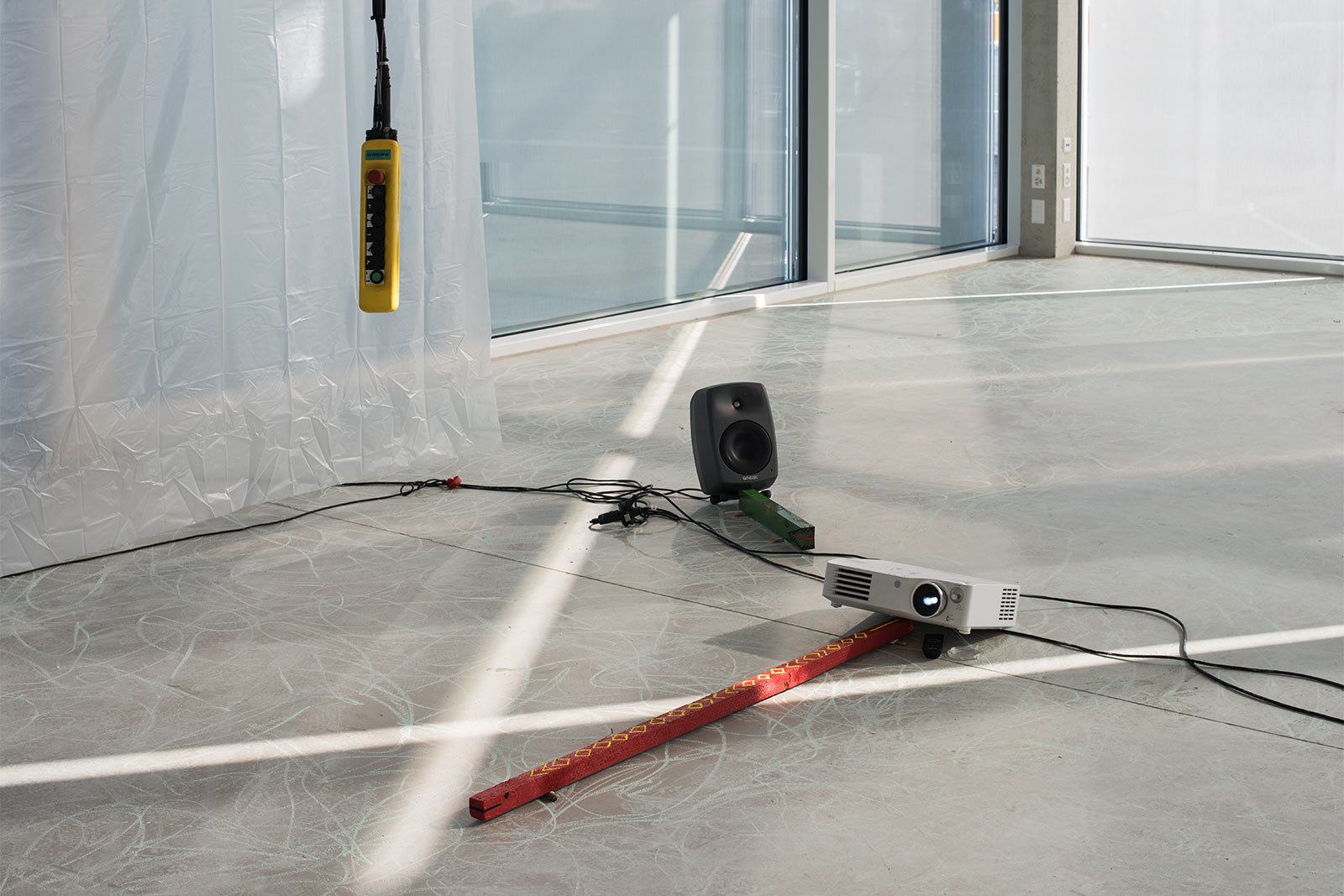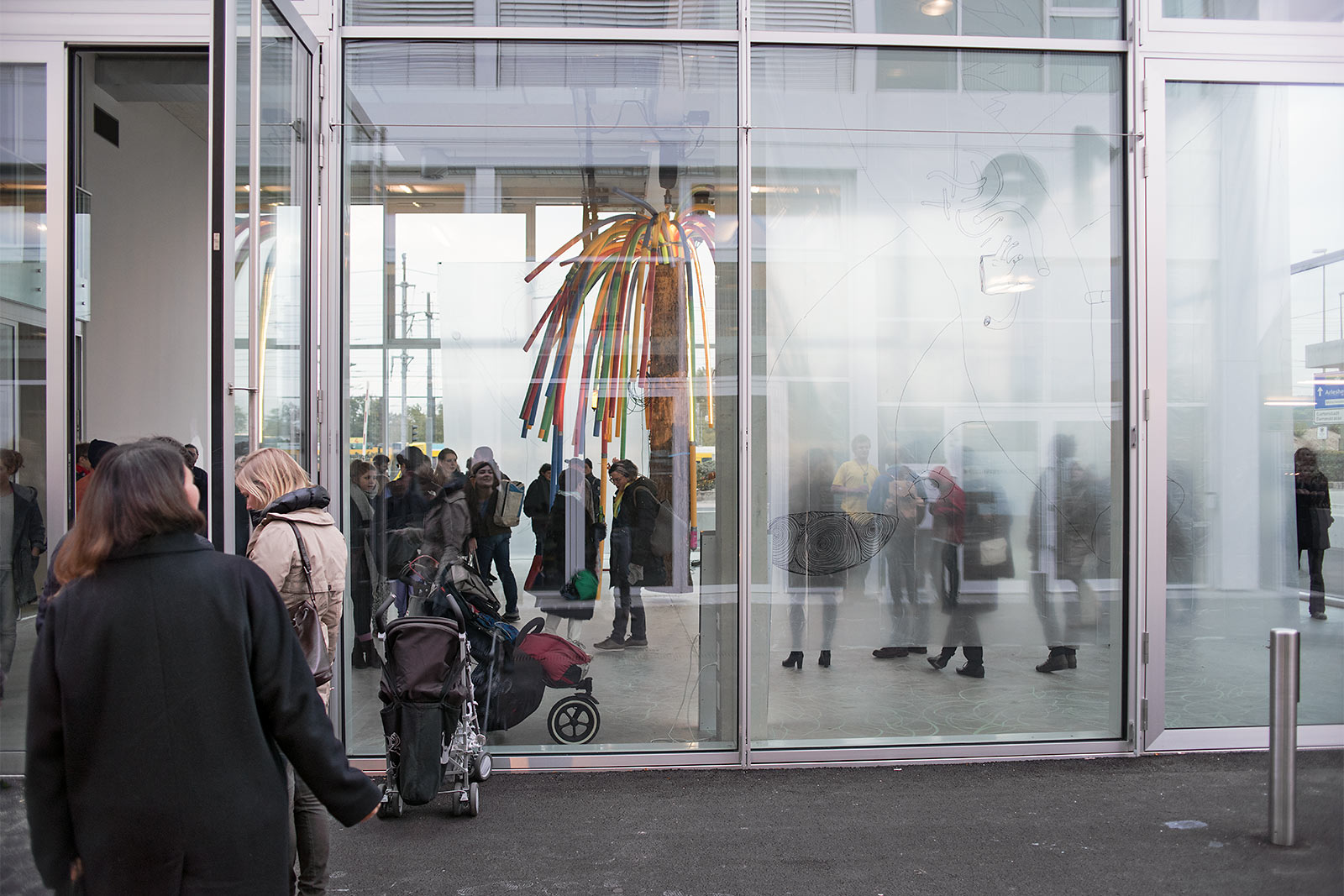The Commissions
Johannes Willi
TREE (Abies Alba)
With the assistance of Vera Bruggmann
Sound ambience by Olivier Rossel
17 October – 1 November, 2015
Opening reception 16 October, 18:00
Curated by Chus Martínez
Curatorial assistant Eveline Wüthrich
«A tree!?» you may exclaim, surprised.
«Do you have any objection?!» says the tree.
This year’s program at Der TANK has been developed to help us think about certain issues that occupy our minds. For centuries we have had the privilege to be able to articulate what we feel. During the same period, we have witnessed art take on the role of the producer of a certain type of experience, one that is different from others, and that bears no relation to function. But it would be interesting to reverse this idea, to see art and artworks not as producers of a certain type of feeling or experience but as an organ, a historically developed organ, that actually feels us, feels the world.
I recently reread a text by Gilles Deleuze in A Thousand Plateaus (1980). «We’re tired of trees,» he writes. «We should stop believing in trees, roots, and radicles. They’ve made us suffer too much.» The French philosopher was, of course, thinking about the tree as an image, a metaphor for genealogical thinking, about Modern dualism, etc. … Here is not the place for philosophy, but for TREE (Abies Alba) itself, because, we are all sure, this tree would disagree with Deleuze.
TREE (Abies Alba) is a new sculpture realized by artist Johannes Willi, with the help of Vera Bruggmann, and commissioned especially for Der Tank, the Institut Kunst’s annex exhibition space of its sculpture workshop. TREE (Abies Alba) is also part of this year’s curriculum focusing on the expansion of the notion of experience. Sensing from trees is an exercise that helps us to reflect on the way we think about artistic production today, about the space left between conceptual forms of art and avant-garde ideas of form and form’s reverse. An organic form modified by an artist is now a sculpture. The numerous examples in mythology of humans morphing into animals illustrate the different ways we engage with intelligence, a journey from human reason to the idea of human-as-animal; from intuition to instinct. There are, however, fewer examples of similar transfers between humans and plants. Plants, which do not have a spine or a centralized nervous system, are assumed to be further away of an articulated intelligence. Yet lately science and art have discovered in plants an incredibly eloquent form of sensing the world. Like the bacteria that inhabit our body and determine the information processed by neurotransmitters, trees are also blind and, at the same time, able to breathe and modify entirely our environment. This TREE here is a humble species, free from all the metaphorical struggles we have—historically—put tress through. TREE (Abies Alba) is here to meet us, to sense us. TREE (Abies Alba) has hands and gummy hair. It has been through the life and limits of industrialization. It is a TREE of the world, so to say. Its major purpose, though, is to gather and see how this piece of life is also artistic research.
«Ein Baum!?», werden Sie überrascht ausrufen.
«Gibt es irgendwelche Einwände?», antwortet der Baum.
In diesem Jahr wird uns Der TANK dabei behilflich sein, über Fragen nachzudenken, die uns in zunehmendem Masse beschäftigen. Seit Jahrhunderten haben wir das Privileg genossen, unsere Gefühle zum Ausdruck zu bringen; und ebenfalls seit Jahrhunderten durften wir beobachten, wie die Kunst eine besondere Art der Erfahrung hervorgebracht hat, die sich von der herkömmlichen unterscheidet und keine Beziehung zur Funktion unterhält. Interessant wäre es jedoch, diese Vorstellung umzukehren, Kunst und Kunstwerk nicht als Produzenten eines speziellen Gefühls oder einer speziellen Erfahrung zu begreifen, sondern als Organ. Ein Organ, das sich historisch entwickelt hat und uns ebenso wie auch die Welt erfühlt.
Erst kürzlich habe ich einen Text von Gilles Deleuze und Félix Guattari wieder gelesen. «Wir sind des Baumes überdrüssig geworden. Wir dürfen nicht mehr an Bäume, an grosse und kleine Wurzeln glauben, wir haben zu sehr darunter gelitten», schreiben sie in Tausend Plateaus (1980). Selbstverständlich denken sie in diesem Zusammenhang an den Baum als Bild, als Metapher des Stammesgeschichtlichen, als Beispiel für den die Moderne bestimmenden Dualismus und so weiter. Doch hier geht es jetzt nicht um Philosophie, sondern um den TREE (Abies Alba) selbst; denn eines ist uns allen klar: Der Baum würde Deleuze und Guattari widersprechen.
TREE (Abies Alba) ist eine neue skulpturale Arbeit, die der Künstler Johannes Willi, mit Hilfe der Künstlerin Vera Bruggmann, geschaffen hat. Sie wird den ganz besonderen Ausstellungsraum Der TANK mit Leben erfüllen, der der Bildhauerwerkstatt angegliedert ist. Gleichzeitig ist dieser TREE (Abies Alba) Bestandteil des diesjährigen Lehrplans, der sich mit der Erweiterung der Idee von Erfahrung beschäftigt. Das Fühlen des Baumes ist eine Übung, die wir mit euch allen teilen wollen.













